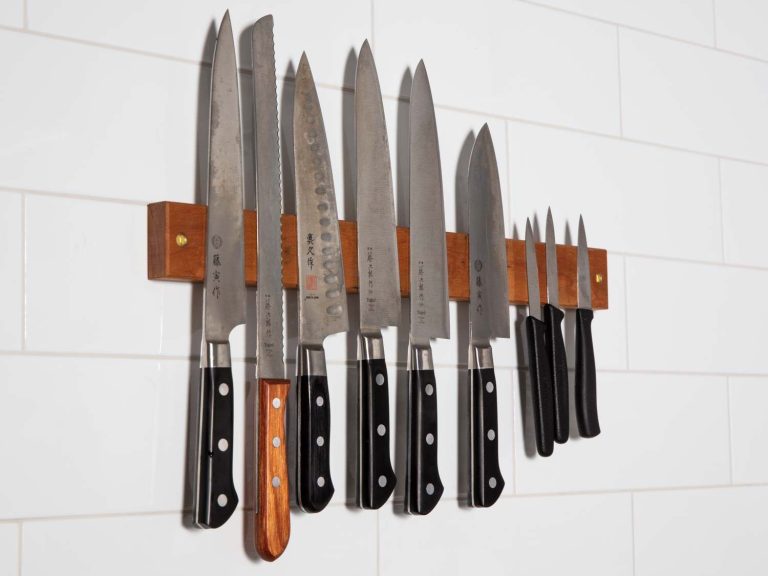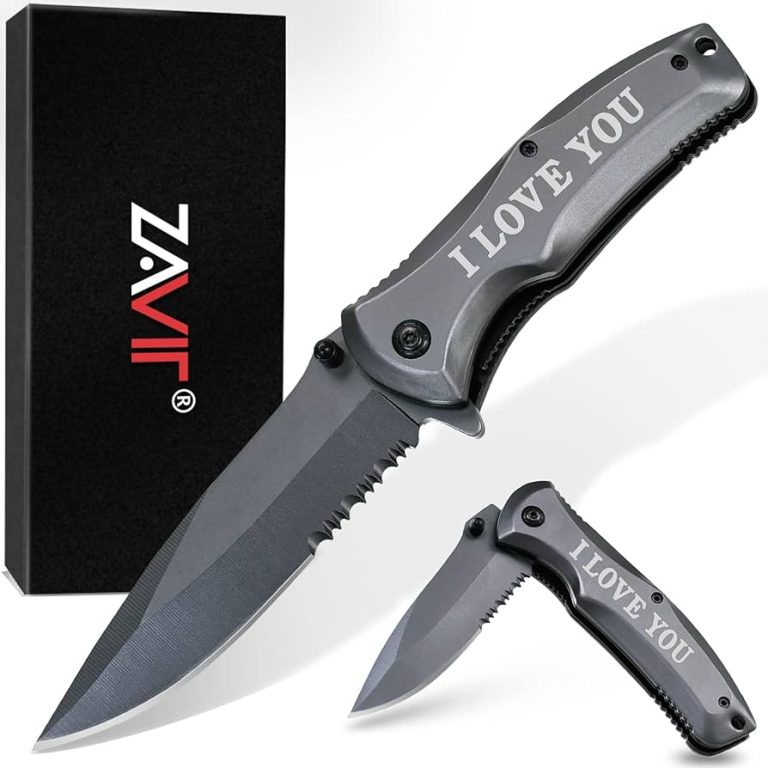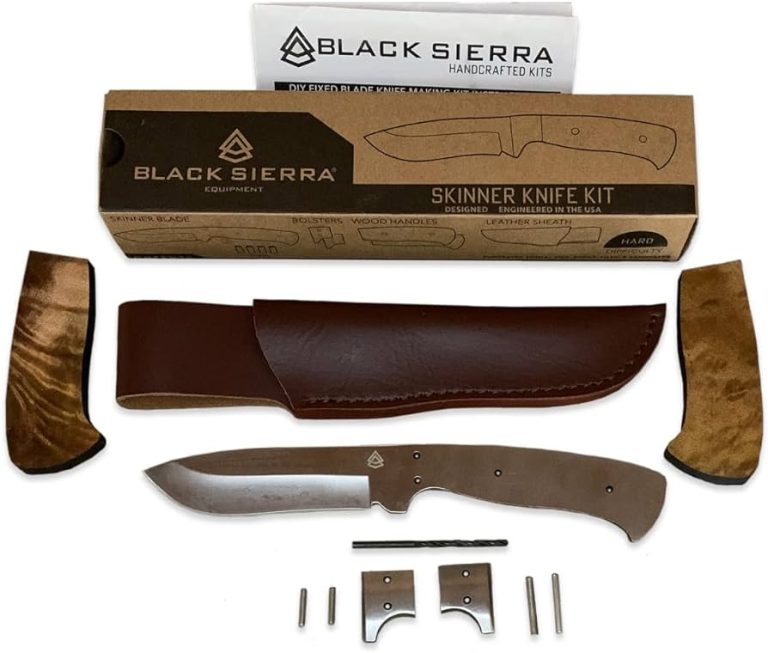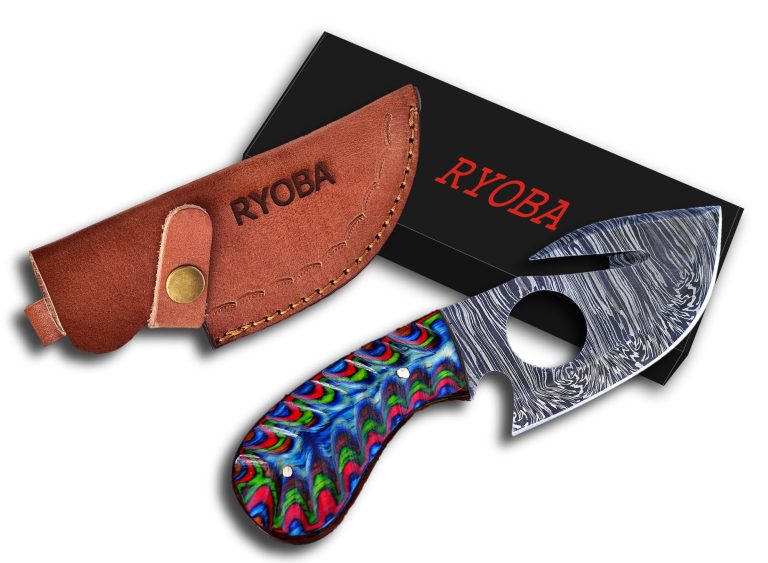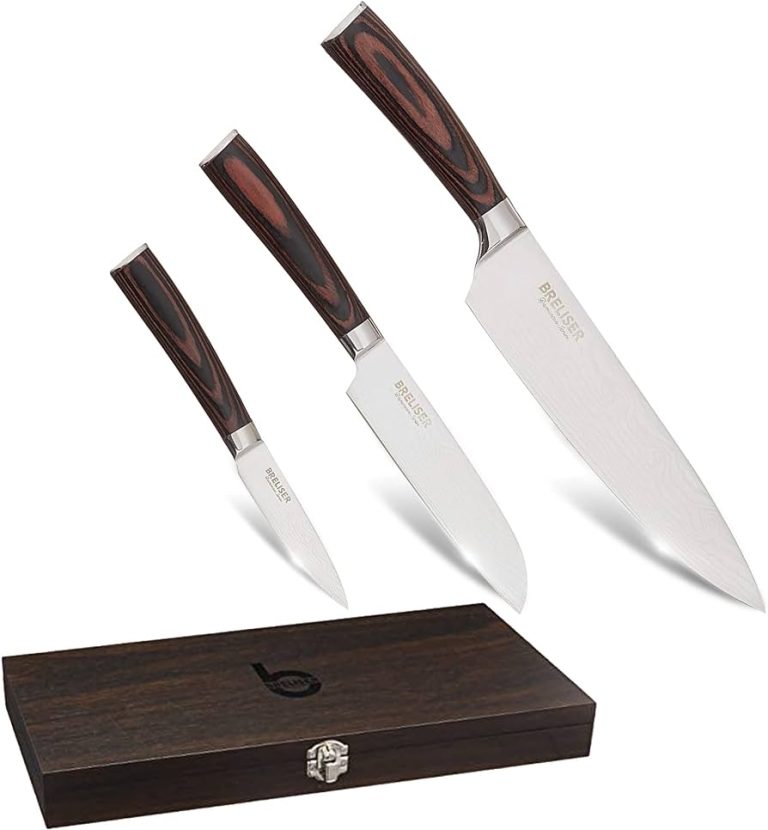Kayaking Knife Maintenance: Tips for Longevity
For long-lasting kayaking knife maintenance, follow these tips: clean and dry the knife after each use, store it in a dry and secure place, regularly inspect and sharpen the blade, and handle it with care during use. Proper maintenance ensures a reliable and functional knife for all your kayaking needs, enhancing both safety and enjoyment on the water.
Whether you’re a professional or a hobbyist, maintaining your kayaking knife is essential for its longevity and optimal performance. Neglecting proper maintenance can lead to rusting, dulling of the blade, and even accidents. We will delve deeper into these tips and provide insights into how you can maintain your kayaking knife.
Why Proper Maintenance Of Your Kayaking Knife Is Crucial
Proper maintenance of your kayaking knife is crucial for its longevity. Follow these tips to ensure it stays in top condition, ready for any adventure on the water.
When it comes to enjoying the exhilarating experience of kayaking, owning a reliable and well-maintained knife is essential. Proper maintenance of your kayaking knife is crucial for several reasons, ensuring its longevity and optimal performance. In this section, we will explore the importance of maintaining your kayaking knife with a focus on corrosion prevention, reducing the risk of accidents and injuries, and ensuring optimal cutting performance.
Let’s dive in!
Corrosion Prevention For Enhanced Durability
Maintaining a kayaking knife free from corrosion is vital to prolong its lifespan and keep it functioning optimally. Here are some key reasons why corrosion prevention is important:
- Regular cleaning: Regularly clean your kayaking knife, especially if it has been exposed to saltwater or other corrosive elements. Using mild soap and warm water, remove any dirt, debris, or salt residue from the blade and handle.
- Drying thoroughly: After cleaning, make sure to dry your knife completely. Moisture can lead to rust and corrosion, so use a clean cloth or towel to ensure no moisture is left on the blade or handle.
- Lubrication: Apply a thin layer of lubricant, such as knife oil or silicone oil, to the blade and pivot points. This helps prevent moisture buildup and protects against corrosion.
- Storage: Store your kayaking knife in a dry and well-ventilated area. Avoid keeping it in a damp or enclosed space, as this can promote corrosion.
Reducing The Risk Of Accidents And Injuries
Proper maintenance of your kayaking knife is not only crucial for its longevity but also for your safety. Here’s why it is essential to reduce the risk of accidents and injuries:
- Blade sharpness: Regularly sharpen your kayaking knife to ensure it maintains its cutting edge. A dull blade can be dangerous and requires more force to cut, increasing the risk of slips and accidents.
- Blade inspection: Before each kayaking trip, inspect your knife’s blade for any signs of damage, such as chips or cracks. Damaged blades can pose a safety hazard, so it’s important to address any issues before using the knife.
- Secure handle: Check the handle of your kayaking knife for any looseness or damage. A loose or damaged handle can lead to accidents, as it may not provide a secure grip during use.
- Sheath condition: Inspect the sheath of your knife to ensure it is in good condition and securely holds the blade. A damaged or loose sheath can result in accidental exposure to the sharp blade.
Ensuring Optimal Cutting Performance
To derive the maximum benefit from your kayaking knife, it’s necessary to maintain its cutting performance. Here’s what you can do to ensure optimal cutting performance:
- Regular honing: Regularly hone your kayaking knife to maintain its sharpness. Honing realigns the blade’s edge, enhancing its cutting efficiency. Using a honing rod or water stone, gently run the blade along the honing surface at a consistent angle.
- Proper technique: Adopting the correct cutting technique can help prolong the cutting performance of your knife. Utilize controlled and precise movements, ensuring the blade is used correctly for various cutting tasks.
- Avoid excessive force: Let the sharpness of your knife do the work. Applying excessive force can lead to blade damage and reduce its cutting efficacy. Allow the sharp edge to glide effortlessly through the material being cut.
- Regular maintenance checks: Routinely inspect your kayaking knife for any signs of wear, loose parts, or blade misalignment. Addressing these maintenance issues promptly can help maintain optimal cutting performance.
Proper maintenance of your kayaking knife is vital for its longevity, your safety, and its cutting performance. By following these maintenance tips, you can ensure that your knife remains in excellent condition for your future kayaking adventures. Stay safe and enjoy your time on the water!
Choosing The Right Kayaking Knife For Longevity
Choosing the right kayaking knife is essential for ensuring longevity. By following proper maintenance tips, you can keep your knife in optimal condition for extended use during your kayaking adventures.
Blade Material Considerations:
- Blade material plays a crucial role in the longevity of a kayaking knife. Here are some considerations to keep in mind:
- High-quality stainless steel: Opt for blades made with high-quality stainless steel, as it is known for its durability and resistance to corrosion.
- Titanium coating: Knives with a titanium coating offer enhanced strength and protection against rust and other types of wear. Consider choosing a knife with this feature for added longevity.
- Carbon steel: Although carbon steel blades may require more maintenance to prevent rust, they offer excellent sharpness and durability, making them a suitable choice for those willing to put in the extra effort.
Handle Material Considerations:
- The handle material of a kayaking knife affects both its longevity and your comfort. Keep the following points in mind when selecting a knife:
- Non-corrosive materials: Choose handles made from materials that are resistant to corrosion, such as high-quality plastics or stainless steel. This will ensure your knife lasts longer, even when exposed to water and salt.
- Rubberized or textured handles: Look for knives with rubberized or textured handles as they provide a more secure grip, even when wet. This feature not only enhances safety but also adds to the overall durability of the knife.
- Ergonomic design: Opt for knives with ergonomically designed handles that fit comfortably in your hand. This prevents strain and fatigue during prolonged use and promotes better control, ultimately contributing to the knife’s longevity.
Ergonomic Design For Comfort And Control:
- Consider the following ergonomic design features when selecting a kayaking knife for longevity:
- Full tang construction: Knives with full tang construction, where the blade extends as one piece into the handle, tend to be sturdier and more durable. This design ensures better control and reduces the risk of the blade breaking or detaching from the handle.
- Finger grooves: Look for knives with finger grooves on the handle. These grooves provide a natural and secure grip, ensuring comfort and control throughout your kayaking adventures.
- Lightweight and balanced: A knife that feels lightweight and well-balanced in your hand allows for easier maneuverability. This minimizes the strain on your wrists and arms, making the knife more comfortable to use, especially during longer kayaking trips.
Remember, choosing the right kayaking knife with suitable blade and handle materials, as well as ergonomic design features, greatly contributes to its longevity. Prioritizing these factors ensures that your knife remains reliable and effective throughout your adventures on the water.
So, select wisely and enjoy your kayaking experiences with confidence and durability.
Cleaning And Drying Your Kayaking Knife
Maintaining your kayaking knife is essential for its longevity. Learn how to clean and dry your knife properly to prevent rust and ensure optimal performance on your kayaking adventures.
Keeping your kayaking knife clean and dry is essential for its longevity on your adventures. Whether you’re gliding through serene lakes or battling the challenging waves of the ocean, proper maintenance will ensure that your knife remains in top-notch condition.
Below, we’ll explore effective techniques for removing debris and saltwater residue, using mild detergents and warm water, and implementing proper drying techniques to prevent rust.
Removing Debris And Saltwater Residue:
- Rinse the knife: Begin by rinsing your kayak knife with fresh water to remove any debris or saltwater residue.
- Gently scrub with a soft brush: Use a soft-bristled brush or toothbrush to scrub away any stubborn particles, focusing on the blade, handle, and locking mechanisms.
- Pay attention to crevices and pivots: Ensure that you clean all the nooks and crannies of your knife, as dirt and saltwater can accumulate in these areas.
- Remove any rust spots: If you spot any rust on your knife, gently scrub it off using a rust eraser or fine steel wool.
- Dry the knife completely: After cleaning, make sure the knife is thoroughly dry to prevent any chance of rust formation.
Using Mild Detergents And Warm Water:
- Choose a mild detergent: Opt for a mild dishwashing liquid or soap specifically designed for cleaning outdoor gear.
- Use warm water: Fill a basin or sink with warm water and add the detergent. The warm water will effectively break down dirt and grime.
- Create a soapy solution: Mix the detergent with the warm water to create a gentle soapy solution.
- Soak the knife: Submerge the knife in the soapy solution and let it sit for a few minutes to loosen any remaining dirt.
- Scrub and rinse: Use the soft brush to scrub the knife, paying attention to all surfaces, and then rinse it thoroughly with fresh water.
Proper Drying Techniques To Prevent Rust:
- Pat dry with a towel: After rinsing, gently pat dry the knife with a clean towel, ensuring all areas are moisture-free.
- Air drying: Allow the knife to air dry completely in a well-ventilated area, away from direct sunlight. Ensure that all water has evaporated before storing the knife.
- Apply a light coat of oil: To provide additional protection against rust, consider applying a thin layer of oil to the blade and other metal parts. This will help repel moisture and prevent oxidation.
- Store in a dry place: Once the knife is dry and oiled, store it in a dry location, preferably in a sheath or protective covering, to shield it from environmental factors.
By following these cleaning and drying techniques, you can extend the lifespan of your kayaking knife and ensure it remains in optimal working condition for your future adventures. Maintaining a clean and dry knife not only improves its overall performance but also enhances your own safety on the water.
Incorporate these tips into your regular maintenance routine, and you’ll be ready to tackle any kayaking expedition with confidence.
Lubricating And Protecting The Blade
Proper maintenance of your kayaking knife is crucial for its longevity. One important aspect is lubricating and protecting the blade, which helps to prevent rusting and ensure smooth operation during your kayaking adventures.
Kayaking Knife Maintenance: Tips For Longevity
Maintaining your kayaking knife is essential for ensuring its longevity and optimal performance on the water. One important aspect of knife maintenance is properly lubricating and protecting the blade. In this section, we will explore how to select the appropriate lubricant, apply it to the blade and pivot, and remove excess lubricant for optimal performance.
Let’s dive in!
Selecting The Appropriate Lubricant:
- Silicone-based lubricants: These lubricants are ideal for kayaking knives as they offer excellent resistance to water and saltwater. They provide a protective barrier against rust and corrosion.
- Lithium grease: This type of grease is commonly used in marine applications and can provide long-lasting lubrication for your knife blade.
- Teflon-based lubricants: These lubricants are suitable for knives with mechanisms that require a slightly thinner lubricant. They offer excellent durability and resistance to water.
Applying The Lubricant To The Blade And Pivot:
- Start by cleaning the knife blade and pivot area with a soft cloth to remove any dirt, debris, or old lubricant residue.
- Apply a small amount of lubricant to the pivot area and blade, ensuring even coverage.
- Use your finger or a clean cloth to spread the lubricant and work it into the moving parts of the knife.
- Open and close the knife several times to distribute the lubricant evenly and ensure smooth movement.
Removing Excess Lubricant For Optimal Performance:
- After applying the lubricant, wipe off any excess using a clean cloth. Excess lubricant can attract dirt and grit, leading to potential performance issues.
- Pay close attention to areas where the blade and handle meet as lubricant build-up can hinder the knife’s functionality.
- Check for any visible residue and remove it with a clean cloth or cotton swab.
- Ensure that the blade moves freely without any friction or stickiness, indicating proper lubrication and removal of excess lubricant.
By regularly lubricating and protecting your kayaking knife’s blade, you can extend its lifespan and enjoy reliable performance during your kayaking adventures. Remember to select the appropriate lubricant, apply it properly to the blade and pivot, and remove any excess for optimal functionality.
Happy kayaking!
Maintaining The Handle And Sheath
Maintaining the handle and sheath of your kayaking knife is essential for its longevity. Regular cleaning, drying, and lubrication will help prevent corrosion and ensure optimal performance on your kayaking adventures.
Inspecting for cracks or damage:
- Regularly examine the handle of your kayaking knife for any signs of cracks, chips, or other noticeable damage. Cracks can weaken the handle and increase the risk of breakage during use.
- Take a closer look at the handle material, whether it’s rubber, plastic, or another type. Look for any signs of wear and tear, such as fraying edges or fading color.
- Check if the handle is securely attached to the blade. Wiggle it gently to ensure there is no movement or looseness.
Cleaning and conditioning the handle:
- Begin by cleaning the handle using mild soap and water. Avoid using harsh chemicals or abrasive materials as they can damage the handle.
- Pay special attention to any grooves or crevices in the handle, as dirt and grime can accumulate there. Use a toothbrush or small brush to reach these areas and remove any debris.
- Once the handle is clean, rinse it thoroughly and pat it dry with a clean cloth.
- To condition the handle and prolong its lifespan, apply a thin layer of oil or wax specifically designed for the handle material. This helps to prevent drying, cracking, and splitting.
- Gently rub the oil or wax onto the handle, ensuring even coverage, and wipe off any excess. Allow it to dry completely before using or storing the knife.
Storing the knife in a protective sheath:
- Always store your kayaking knife in a sheath when it is not in use. This helps to protect the blade as well as prevent accidental injury.
- Choose a sheath that is durable, water-resistant, and fits the knife securely. It should have a snug or snap closure to keep the knife in place and prevent it from falling out.
- Before putting the knife into the sheath, ensure that the blade is clean and dry to prevent rusting.
- Make sure the sheath is also clean and free from any debris that could scratch the blade.
- Store the knife in a cool, dry place away from direct sunlight. Avoid extreme temperature changes as they can affect the handle material.
By regularly inspecting the handle for cracks, cleaning and conditioning it properly, and storing the knife in a protective sheath, you can ensure the longevity of your kayaking knife. Taking these simple maintenance steps will help to keep your knife in optimal condition for your next kayaking adventure.
Sharpening Your Kayaking Knife
Maintain the longevity of your kayaking knife with these essential maintenance tips. Keep it sharp and in top condition for a smooth and safe kayaking experience.
Choosing The Right Sharpening Tool
- It is important to select the appropriate sharpening tool for your kayaking knife to maintain its longevity. Here are some options to consider:
- Whetstone: A traditional and versatile sharpening tool that can be used for various blade types. It requires water to lubricate the stone during the sharpening process.
- Sharpening steel: Ideal for honing the blade and keeping it sharp between uses. This tool is suitable for maintaining the knife’s cutting edge.
- Electric sharpener: If you prefer a more convenient option, electric sharpeners offer quick and precise results. They utilize rotating abrasive discs to sharpen the blade.
- Consider the blade material and its hardness to determine which sharpening tool would be the most effective for your kayaking knife.
Techniques For Sharpening The Blade
- Once you have chosen the right sharpening tool, you can begin sharpening your kayaking knife using the following techniques:
- Hold the knife at a 20-degree angle: Maintain a consistent angle while sharpening the blade to ensure an even and sharp edge. This can be achieved by using a sharpening guide or practicing with a steady hand.
- Start with the coarse grit: If your sharpening tool has different grit options, begin with the coarse grit to remove any dullness or nicks on the blade. Gradually progress to finer grits to refine the edge.
- Use consistent pressure: Apply even and consistent pressure as you move the blade across the sharpening surface. This will help maintain the desired angle and promote uniform sharpening.
- Alternate sides: Sharpen each side of the blade evenly to maintain balance. Alternate between sides after a few strokes to achieve an even edge.
Testing The Knife’S Sharpness
- After sharpening your kayaking knife, it is essential to test its sharpness to ensure optimal performance. Here are some methods to check the knife’s sharpness:
- Paper test: Try cutting a piece of paper with your newly sharpened knife. If it slices through the paper effortlessly and cleanly, your blade is sharp.
- Hair test: Gently run the blade along a strand of hair. If it effortlessly cuts through the hair without pulling or tugging, your knife is sharp.
- Thumbnail test: Carefully run the edge of the blade across your thumbnail. A sharp knife will bite into the thumbnail without sliding off.
Remember, regular maintenance and sharpening are crucial for the longevity of your kayaking knife. By choosing the right sharpening tool, employing proper sharpening techniques, and testing the resulting sharpness, you can ensure your knife is ready for all your kayaking adventures.
Inspecting And Replacing Components
Maintaining the longevity of your kayaking knife requires regular inspections and component replacements. By keeping a close eye on the condition of your knife and replacing any worn or damaged parts, you can ensure its optimal performance and durability on your kayaking adventures.
Kayaking Knife Maintenance: Tips For Longevity
When it comes to kayaking, having a well-maintained knife is crucial for safety and convenience. Just like any other tool, a kayaking knife requires regular inspection and maintenance to ensure its longevity. In this section, we will discuss the importance of inspecting and replacing components of your kayaking knife.
By following these tips, you’ll be able to keep your knife in top-notch condition for all your kayaking adventures. Let’s dive in!
Checking For Loose Screws Or Rivets:
- Examine the handle of your kayaking knife and check for any loose screws or rivets.
- Tighten any loose screws or replace missing ones to ensure the handle is secure.
- Loose components can affect the overall performance of the knife and may pose a safety risk while using it. Inspecting and tightening screws or rivets is a simple yet essential step in knife maintenance.
Replacing Worn Or Damaged Parts:
- Inspect the blade of your kayaking knife for signs of wear or damage, such as chips or dullness.
- A worn or damaged blade can impact the efficiency and effectiveness of the knife. It may struggle to cut through ropes or other materials when needed.
- If you notice any issues, consider replacing the blade or, if possible, sharpening it to restore its original functionality.
- Additionally, check the handle for any cracks, splits, or signs of excessive wear. A compromised handle can compromise your grip and control while using the knife. If needed, replace the handle to ensure optimal performance.
Seeking Professional Assistance If Needed:
- If you are unsure about any component of your kayaking knife or lack the necessary skills to make repairs, it’s always better to seek professional assistance.
- Professional knife experts can assess the condition of your knife and provide appropriate solutions or replacements if necessary.
- They have the knowledge and expertise to address any potential issues and ensure your knife is in top shape.
- Don’t hesitate to reach out to a professional if you feel uncertain or uncomfortable performing maintenance tasks yourself.
By regularly inspecting and replacing components of your kayaking knife, you can extend its lifespan and ensure it remains reliable in any kayaking situation. Take the time to check for loose screws or rivets, replace worn or damaged parts, and seek professional assistance if needed.
By following these tips, you can maintain your kayaking knife’s longevity and enjoy safe and successful adventures on the water.
Storing Your Kayaking Knife Properly
Properly storing your kayaking knife is essential for maintaining its longevity. Follow these tips to ensure your knife stays in top condition and ready for use during your kayaking adventures.
When it comes to maintaining the longevity of your kayaking knife, proper storage is key. Here are some important tips for ensuring that your knife stays in optimal condition for your next kayaking adventure:
- Dry storage in a well-ventilated area:
- Store your kayaking knife in a dry environment to prevent the buildup of moisture that could lead to rust or corrosion.
- Choose a well-ventilated area that allows air circulation to keep your knife dry.
- Avoid storing your knife in a damp or humid location, such as a basement or near a water source.
- Avoiding extreme temperature and humidity:
- Extreme temperatures can damage the integrity of your kayaking knife. Avoid exposing it to excessive heat or cold.
- Keep your knife away from direct sunlight, as prolonged exposure to UV rays can cause the handle materials to deteriorate.
- High humidity levels can contribute to rust and corrosion. Protect your knife by storing it in a location with relative humidity between 40% and 50%.
- Regularly inspecting and maintaining storage containers:
- To ensure the longevity of your kayaking knife, inspect the storage containers regularly for any signs of damage or wear.
- Make sure the containers are clean and free from debris that could potentially scratch or damage the blade.
- If your knife comes with a sheath or a protective cover, use it to keep the blade securely and safely stored.
- Consider investing in a specially designed knife storage solution that provides extra protection against potential damage.
Properly storing your kayaking knife is essential for maintaining its longevity. By following these tips, you can ensure that your knife remains in optimal condition for many memorable kayaking adventures to come.
Regular Maintenance Schedule For Kayaking Knives
Maintaining a regular maintenance schedule is crucial for the longevity of your kayaking knives. Implementing these tips will help keep your knives in top condition for your kayak adventures.
Kayaking Knife Maintenance: Tips For Longevity
Regular maintenance is essential for ensuring the longevity and optimal performance of your kayaking knives. By establishing a routine maintenance plan, you can keep your knives in top shape and ready for any adventure on the water. Here’s a recommended schedule for maintaining your kayaking knives:
Establishing A Routine Maintenance Plan
- Monthly inspections: Regularly inspect your kayaking knives to check for any signs of wear, rust, or damage. This will allow you to identify and address any issues early on, preventing further damage and ensuring your knife is always ready for action.
- Cleaning after each use: After each kayaking trip, make it a habit to clean your knife thoroughly. Rinse off any saltwater, sand, or debris that may have accumulated, as these can cause corrosion and damage to the blade.
- Sharpening as needed: Keep a keen edge on your kayaking knife by sharpening it whenever necessary. Dull blades can be inefficient and pose safety risks, so it’s important to maintain a sharp cutting edge.
- Lubrication: Apply a thin layer of lubricant or rust inhibitor to the blade and pivot points of your knife regularly. This will help protect against corrosion and ensure smooth operation.
Recommended Frequency For Different Tasks
- Monthly inspections: Perform a thorough inspection of your kayaking knife at least once a month.
- Cleaning after each use: Clean your knife after every kayaking trip to prevent saltwater, debris, and dirt buildup.
- Sharpening as needed: Check the sharpness of your knife regularly and sharpen it whenever it starts to dull or become less efficient.
- Lubrication: Apply a rust inhibitor or lubricant to your knife once a month or as needed.
Benefits Of Consistent Maintenance
Consistently maintaining your kayaking knife offers several benefits:
- Longevity: Regular maintenance helps prolong the lifespan of your knife, ensuring it remains useful for years to come.
- Optimal performance: A well-maintained knife will always perform at its best, allowing you to tackle tasks with ease and efficiency.
- Safety: By inspecting and maintaining your knife, you can identify potential safety risks and address them before they lead to accidents or injuries.
- Dependability: Knowing that your knife is in good condition gives you peace of mind, making your kayaking adventures more enjoyable and worry-free.
By following a regular maintenance schedule for your kayaking knives, you can extend their lifespan, maintain optimal performance, and ensure a safe and enjoyable experience on the water. So, make it a priority to establish and stick to a routine maintenance plan for your valuable kayaking tools.

Credit: www.amazon.com
Frequently Asked Questions Of Kayaking Knife Maintenance: Tips For Longevity
Why Do Kayakers Carry A Knife?
Kayakers carry a knife for safety reasons, like cutting ropes, self-defense, and freeing themselves if caught underwater.
How Do I Keep My Knife Clean?
To keep your knife clean, follow these steps: 1. Rinse the knife with warm water and gentle soap. 2. Gently scrub the blade with a non-abrasive sponge or cloth. 3. Dry the knife thoroughly to prevent rusting. 4. Store the knife in a safe place away from moisture and other utensils.
How Do You Maintain A Kayak Hull?
To maintain a kayak hull, rinse it with fresh water after use, dry it completely, store it in a cool and dry place, and inspect it regularly for any damage or cracks.
How Do You Take Care Of A Composite Kayak?
To take care of a composite kayak: – Rinse it with fresh water after each use. – Store it indoors or in a shaded area to protect it from the sun. – Avoid dragging it on rough surfaces to prevent scratches.
– Regularly inspect for cracks or damage and repair promptly.
Finalise
By following these essential maintenance tips for your kayaking knife, you can ensure its longevity and optimized performance on your adventures. Regularly cleaning your knife with fresh water and drying it thoroughly will prevent rust and corrosion. Sharpening the blade regularly using a suitable knife sharpener or honing stone will maintain its cutting efficiency.
It is also crucial to store your knife in a dry and protective sheath to prevent any accidental damage or injury. Additionally, checking for any loose screws or parts and making necessary adjustments will guarantee your knife’s functionality and safety.
Remember, a well-maintained kayak knife is not only a valuable tool but also a reliable asset for your kayaking trips. So, make sure to prioritize its care and maintenance to enjoy many more memorable journeys on the water.

